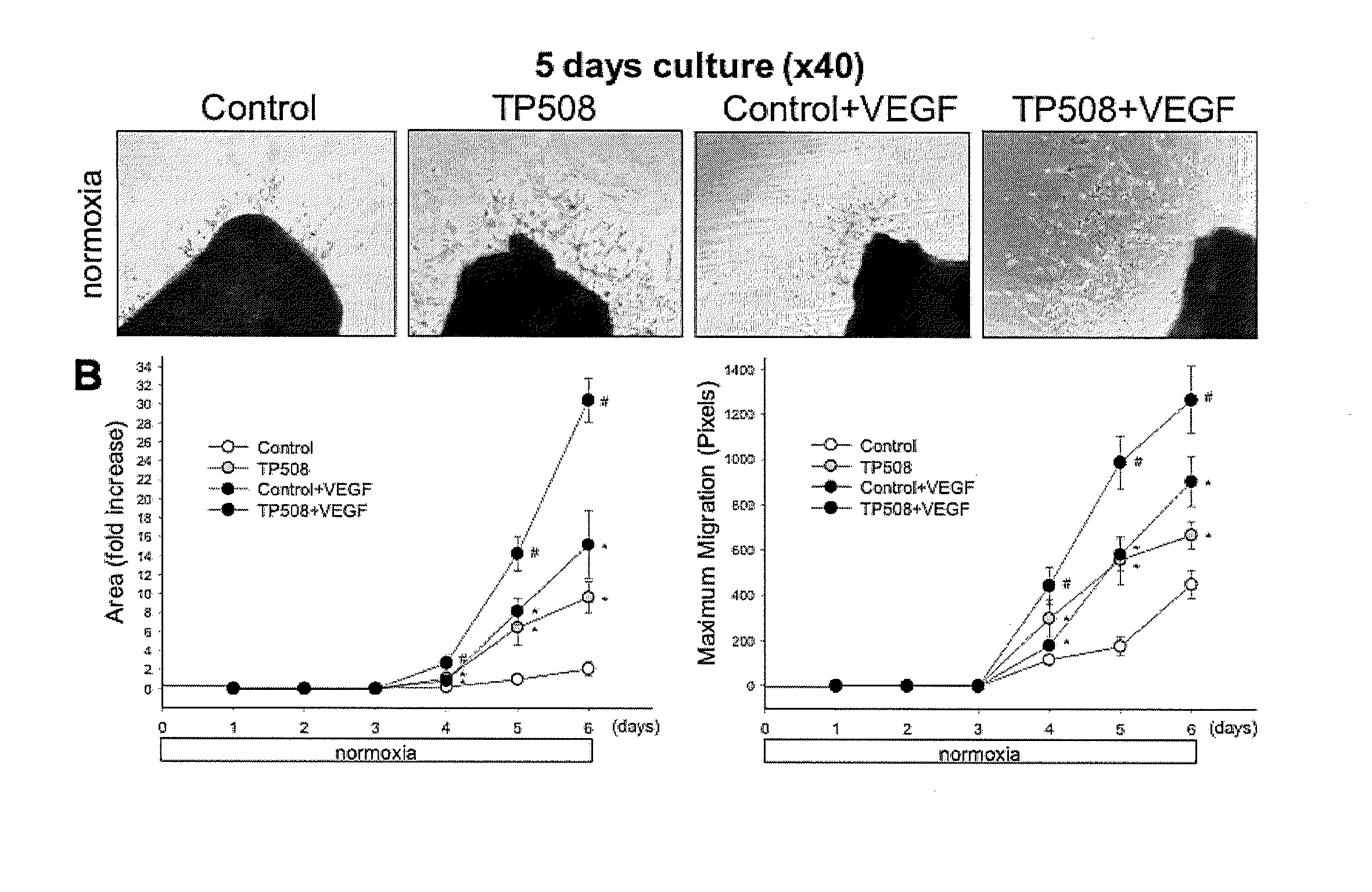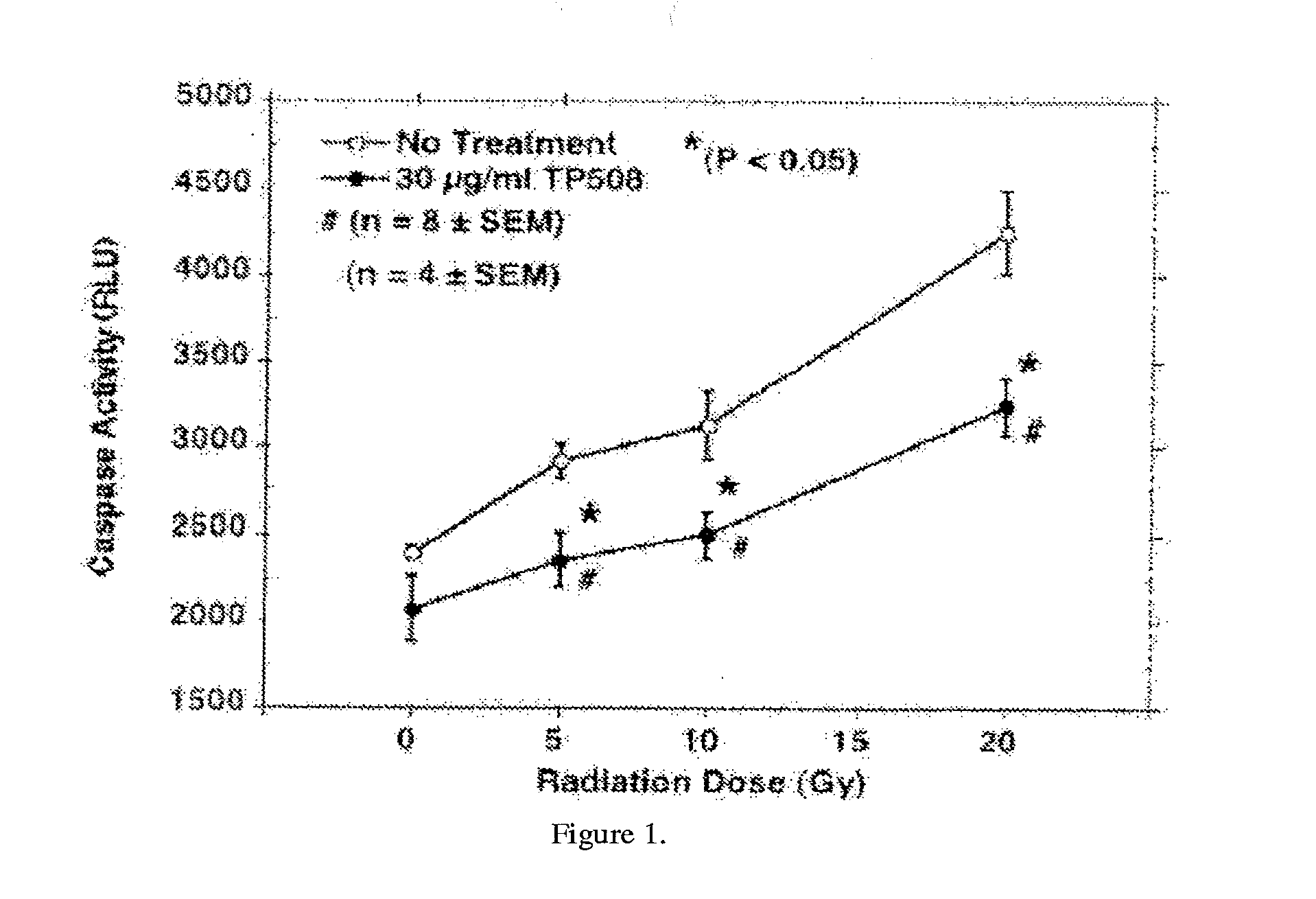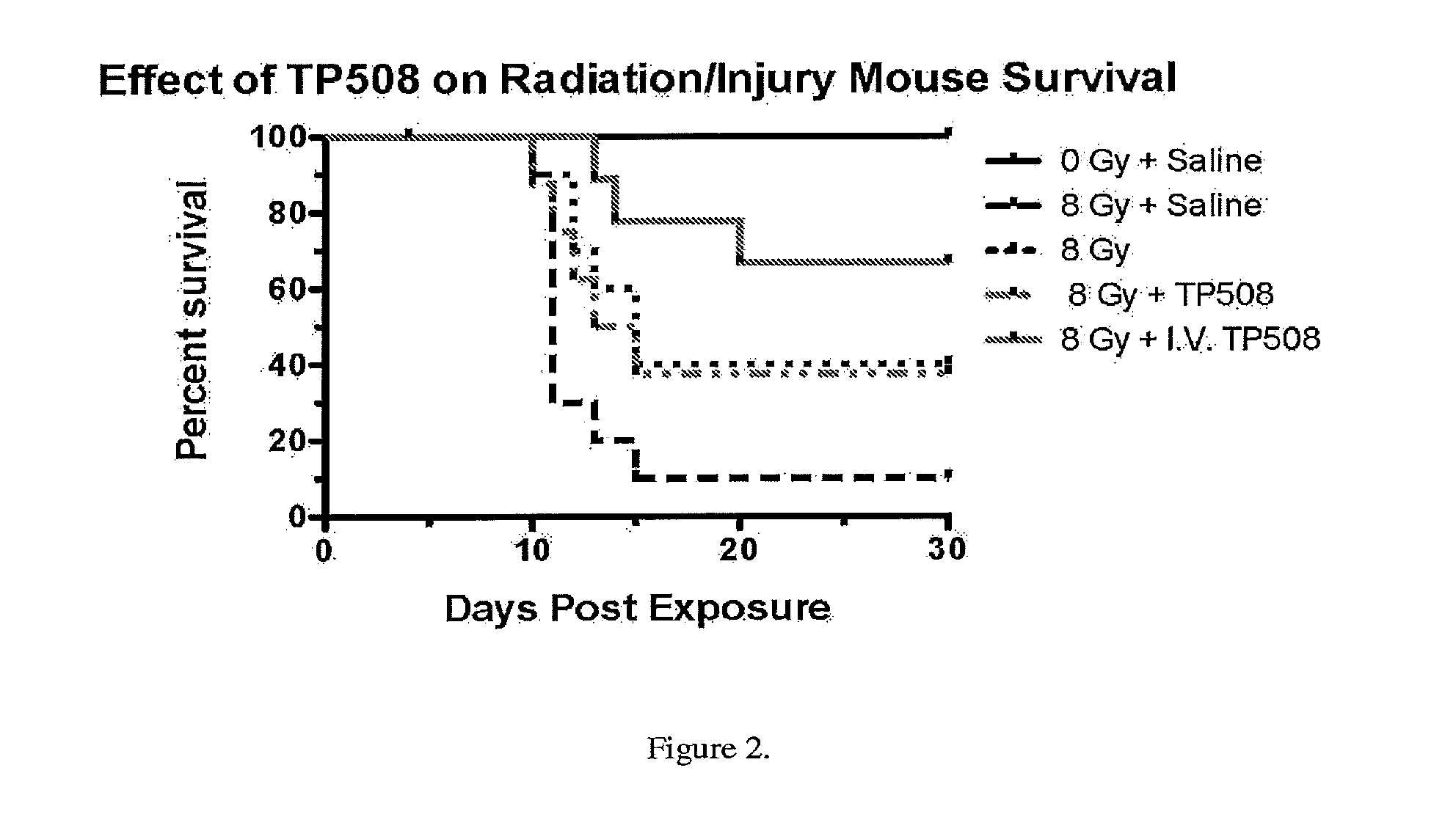Methods of using thrombin peptide derivatives
a technology of thrombin and derivatives, which is applied in the direction of peptide/protein ingredients, pharmaceutical active ingredients, medical preparations, etc., can solve the problems of lethal radiation exposure or sub-lethal radiation exposure, and achieve the effects of promoting healing of open dermal wounds, reducing radiation exposure, and reducing radiation exposur
- Summary
- Abstract
- Description
- Claims
- Application Information
AI Technical Summary
Benefits of technology
Problems solved by technology
Method used
Image
Examples
example 1
Effects of TP508 on Apoptosis of Human Microvascular Endothelial Cell (HMVEC) Exposed to Radiation
[0205]Human dermal microvascular endothelial cells (HMVEC) were irradiated using a J.L., Shepherd & Associates, Mark 1, 9K, 137Cs Gamma Irradiator to deliver exposures of 5, 10, and 20 Gy. Following irradiation, cells received 30 u-g / ml TP508 or saline (No Treatment). After 3 h cells were assayed for activation of caspase-3 and caspase-7 as a measure of apoptosis using Caspase-Glo® 3 / 7 Assay (Promega, Madison, Wis.). As shown in FIG. 1, radiation caused a dose-dependent increase in Caspase 3 / 7 activity. TP508 treatment of these cells, however, significantly decreased radiation-induced activation of Caspase 3 / 7. This data demonstrates that TP508 attenuates apoptosis in microvascular endothelial cells induced by radiation.
example 2
Effect of TP508 on Mouse Survival Following 8 Gy Radiation Exposure
[0206]Swiss ICR mice were irradiated (137Cs Gamma Irradiator Mark 30, Shephard and Associates, San Fernando, Calif.) with exposures of 8 Gy or 3 Gy. After 4 hours or 24 hours, mice were anesthesized and prepared for surgery. A single 1.5 cm square full dermal excision was created and treated topically with saline (25 μl) or saline plus TP508 (0.25 μg) and covered with Opsite® occlusive dressing. There was a significant decrease in survival in mice that have sustained radiation combined injuries (Table 1 below). Significant increase in survival was observed when mice were injected with TP508 24 hours after radiation exposure (see Table 1). Increase in survival was also observed in mice receiving topical treatment of wounds with TP508 (Table 1 and FIG. 2).
TABLE 1Effect of TP508 on Survival of Micewith Radiation Combined InjuriesMeanMedian30-daySurvivalSt.SurvivalsurvivalSignif-GroupTreatment(days)Dev.(days)(%)icance0 G...
example 3
Effect of TP508 on Mouse Survival Following Radiation Exposure to the Lethal Dose of 12 Gy
[0207]Mice were exposed to a lethal dose of 137Cs gamma irradiation (12 Gy). Injection of a single bolus dose of TP508 (500 μg) within 2 hours after exposure delayed the mortality of the first mouse in the treated group by about 3 days and increased the group mean survival time by about 15%. (See FIG. 3). TP508 has a short half-life and may thus only be present in blood at an effective concentration for the first two to three hours. This may explain why it only extends survival for a few days.
PUM
| Property | Measurement | Unit |
|---|---|---|
| Time | aaaaa | aaaaa |
| Solar gamma radiation | aaaaa | aaaaa |
| Length | aaaaa | aaaaa |
Abstract
Description
Claims
Application Information
 Login to View More
Login to View More - R&D
- Intellectual Property
- Life Sciences
- Materials
- Tech Scout
- Unparalleled Data Quality
- Higher Quality Content
- 60% Fewer Hallucinations
Browse by: Latest US Patents, China's latest patents, Technical Efficacy Thesaurus, Application Domain, Technology Topic, Popular Technical Reports.
© 2025 PatSnap. All rights reserved.Legal|Privacy policy|Modern Slavery Act Transparency Statement|Sitemap|About US| Contact US: help@patsnap.com



